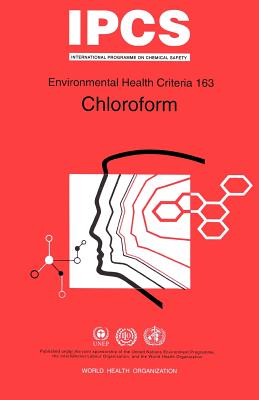Chloroform

Chloroform
Evaluates the risks to human health and the environment posed by exposure to chloroform, a volatile liquid used in pesticide formulations and as a solvent and chemical intermediate. Its use as an anaesthetic and in proprietary medicines has been discontinued in many countries following well-documented reports of adverse effects on respiratory, cardiac and liver function. Exposure of the general public occurs via food, drinking-water, and indoor air, with water use in homes making a substantial contribution to levels in indoor air. Studies have demonstrated significant dermal absorption while showering. The most extensive chapter reviews the results of toxicity studies in laboratory animals and in vitro test systems. While both the liver and the kidneys are target organs, the most universally observed toxic effect is damage to the liver. Studies indicate that cytotoxicity followed by cell proliferation is the most important cause for the development of liver and kidney tumours following experimental exposure to chloroform. The severity of toxic effects was observed to vary according to species, vehicle, and route of administration. A chapter on health effects in humans notes disturbances in respiratory and cardiovascu-lar functions observed following short-term exposure. As in animals, liver and kidney damage was the most frequently reported adverse effect of long-term exposure. Data were judged inadequate to implicate chloroform exposure via drinking-water as a cause of human cancer. Concerning effects on the environment, the report concludes that the low levels of chloroform in surface water should not pose a hazard to aquatic organisms. "... produced with the usual conciseness and readability..." - International Journal of Environmental Studies
PRP: 294.29 Lei
Acesta este Prețul Recomandat de Producător. Prețul de vânzare al produsului este afișat mai jos.
264.86Lei
264.86Lei
294.29 LeiLivrare in 2-4 saptamani
Descrierea produsului
Evaluates the risks to human health and the environment posed by exposure to chloroform, a volatile liquid used in pesticide formulations and as a solvent and chemical intermediate. Its use as an anaesthetic and in proprietary medicines has been discontinued in many countries following well-documented reports of adverse effects on respiratory, cardiac and liver function. Exposure of the general public occurs via food, drinking-water, and indoor air, with water use in homes making a substantial contribution to levels in indoor air. Studies have demonstrated significant dermal absorption while showering. The most extensive chapter reviews the results of toxicity studies in laboratory animals and in vitro test systems. While both the liver and the kidneys are target organs, the most universally observed toxic effect is damage to the liver. Studies indicate that cytotoxicity followed by cell proliferation is the most important cause for the development of liver and kidney tumours following experimental exposure to chloroform. The severity of toxic effects was observed to vary according to species, vehicle, and route of administration. A chapter on health effects in humans notes disturbances in respiratory and cardiovascu-lar functions observed following short-term exposure. As in animals, liver and kidney damage was the most frequently reported adverse effect of long-term exposure. Data were judged inadequate to implicate chloroform exposure via drinking-water as a cause of human cancer. Concerning effects on the environment, the report concludes that the low levels of chloroform in surface water should not pose a hazard to aquatic organisms. "... produced with the usual conciseness and readability..." - International Journal of Environmental Studies
Detaliile produsului










